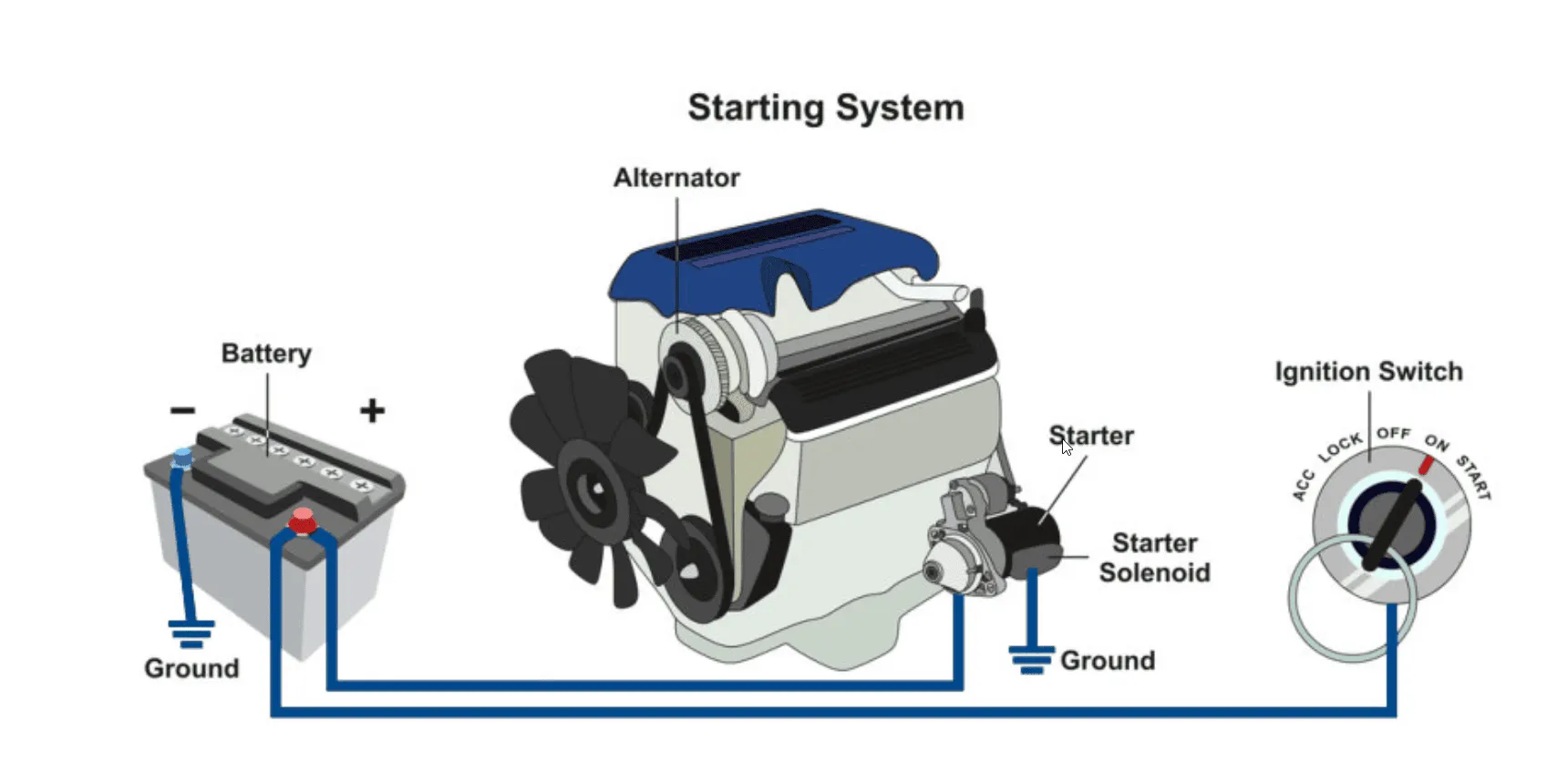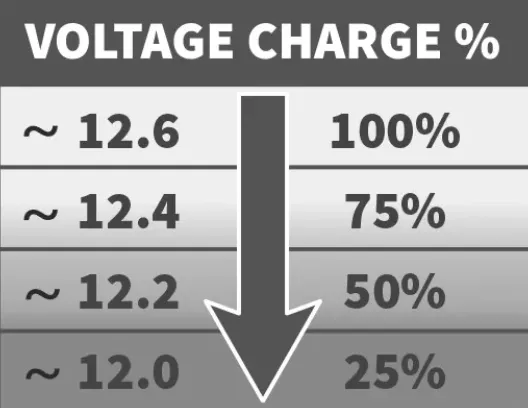The starter battery is one of the most essential components of a vehicle’s electrical system. It provides the high current necessary to start the engine, powers accessories when the engine is off, and ensures voltage stability across the system. Beyond its electrical duties, the starter battery must also withstand demanding thermal conditions, from freezing winters to scorching summers.
Understanding both the functional roles and electrical performance characteristics of a starter battery is crucial when choosing the right type for a vehicle. This article combines technical specifications with practical applications to explain how starter batteries work, what performance metrics matter, and how temperature and usage conditions affect their reliability and lifespan.
- Electrical Functions of a Starter Battery (CCA, Voltage, Engine-Off Power)
- Starter Battery Thermal Performance and Operating Temperatures
- Battery Performance Metrics: Voltage, Capacity, RC, CCA, and Cycling
- Performance in Real-World Vehicle Scenarios
- Frequently Asked Questions (FAQs)
- Conclusion
- References:
Electrical Functions of a Starter Battery (CCA, Voltage, Engine-Off Power)
Cold Cranking Power
- Must supply a large surge of current (typically 400–800 Cold Cranking Amperes, CCA) for around 30 seconds to start the engine.
- In cold climates (down to –30 °C), chemical reactions slow, making high CCA ratings especially important for reliable starts.
Supplementary Power
- Supports the electrical system when the alternator cannot meet total demand — for example, in heavy urban traffic with lights, air conditioning, and infotainment systems operating simultaneously.
Engine-Off Power Supply
- Powers accessories such as lights, audio systems, and alarms when the engine is not running.
- To preserve lifespan, only 5–20 % of total capacity is typically used in these scenarios.
Voltage Stability
- Maintains ~12.6 V when fully charged and between 13.8–14.4 V when being charged by the alternator.
- Stable voltage is critical to protect sensitive vehicle electronics.

Starter Battery Thermal Performance and Operating Temperatures
A starter battery must perform across a wide range of temperatures:
- Cold tolerance – Maintains starting power in sub-zero conditions despite increased internal resistance and slower reaction rates.
- Heat resistance – Withstands high ambient temperatures that accelerate electrolyte evaporation and grid corrosion.
- Thermal stability – Operates briefly in extreme heat (up to 75 °C for less than 20 minutes during severe driving conditions such as steep mountain climbs).
Typical operating conditions:
| Driving Situation | Maximum Operating Temperature | Battery Impact |
| Normal road driving | 50–55 °C | Moderate heating, minimal performance loss |
| Urban traffic (high load) | 60–65 °C | High accessory demand, increased thermal stress |
| Severe use (mountains, towing) | Up to 75 °C | Temporary high thermal stress |
Battery Performance Metrics: Voltage, Capacity, RC, CCA, and Cycling
Battery Voltage
- Open-circuit voltage per cell: ~2.1 V when fully charged.
- A 12 V battery has six cells in series, producing ~12.6 V at full charge.
- Below 12.4 V: partially discharged; below 12.0 V: recharge required to prevent sulphation.


Capacity
- Measured in ampere-hours (Ah) — the total charge deliverable at a specified discharge rate before reaching the cut-off voltage (usually 10.5 V for 12 V batteries).
- Influenced by:
- Active material mass
- Acid density and volume
- Plate surface area and count
- Separator type and design
- Temperature (lower in cold conditions)
- Internal resistance and battery age
Reserve Capacity (RC)
- Measured in minutes: the duration a fully charged battery can supply 25 A at 27 °C before voltage drops to 10.5 V.
- Critical for emergency situations when the alternator fails.
Cold Cranking Amperes (CCA)
- Current a fully charged battery can deliver for 30 s at –18 °C while maintaining at least 7.2 V.
- Higher CCA is essential for reliable cold starts.
Charge Acceptance
- Ability of a partially discharged battery to accept charging current, typically tested at 0 °C with 14.4 V applied.
- High charge acceptance benefits start–stop and regenerative braking systems.
Cycling or Endurance
- Number of charge–discharge cycles before significant capacity loss.
- AGM and EFB batteries generally outperform conventional flooded designs.
Water Consumption
- Loss mainly occurs via electrolysis during overcharging.
- Measured in grams per ampere-hour (g/Ah) in controlled overcharge tests.
- Maintenance-free types (AGM, sealed EFB) exhibit minimal water loss.
Performance in Real-World Vehicle Scenarios
- Urban driving with start–stop systems – Requires high cycling capability and fast charge acceptance (AGM or EFB preferred).
- Cold climate operation – High CCA ratings improve starting reliability.
- Hot climate operation – Heat-resistant grid alloys and AGM designs reduce electrolyte evaporation.
- High electrical load vehicles – Larger capacity and higher RC ensure stable voltage and longer accessory operation.
Choosing the Right Starter Battery
When selecting a starter battery, consider:
- Climate – CCA for cold regions; heat-resistant technologies for hot climates.
- Vehicle type – Standard flooded for basic vehicles; AGM/EFB for start–stop or high accessory loads.
- Driving style – Frequent short trips need better cycling endurance; long trips suit standard designs.
- Budget vs longevity – AGM costs more but offers longer service life in demanding use.
Frequently Asked Questions (FAQs)
Conclusion
The starter battery is more than a power source for starting the engine — it is a dynamic energy store that supports electronics, stabilises voltage, and operates reliably across extreme conditions.
By understanding its functions and performance metrics, vehicle owners and technicians can make informed decisions that extend battery life, improve reliability, and match specifications to the vehicle’s real-world demands.
References:
1. Pavlov, D. (2017). Lead–Acid Batteries: Science and Technology. eBook ISBN: 9780444595607
2. International Electrotechnical Commission. (2018). IEC 60095-1: Lead-Acid Starter Batteries – Part 1: General Requirements and Methods of Test. IEC. https://webstore.iec.ch/en/publication/59834

